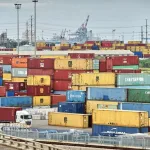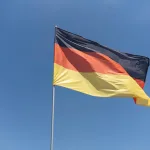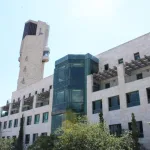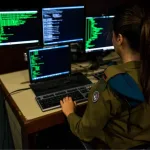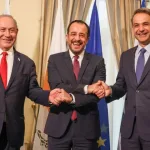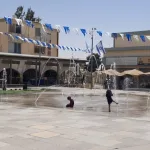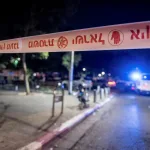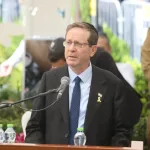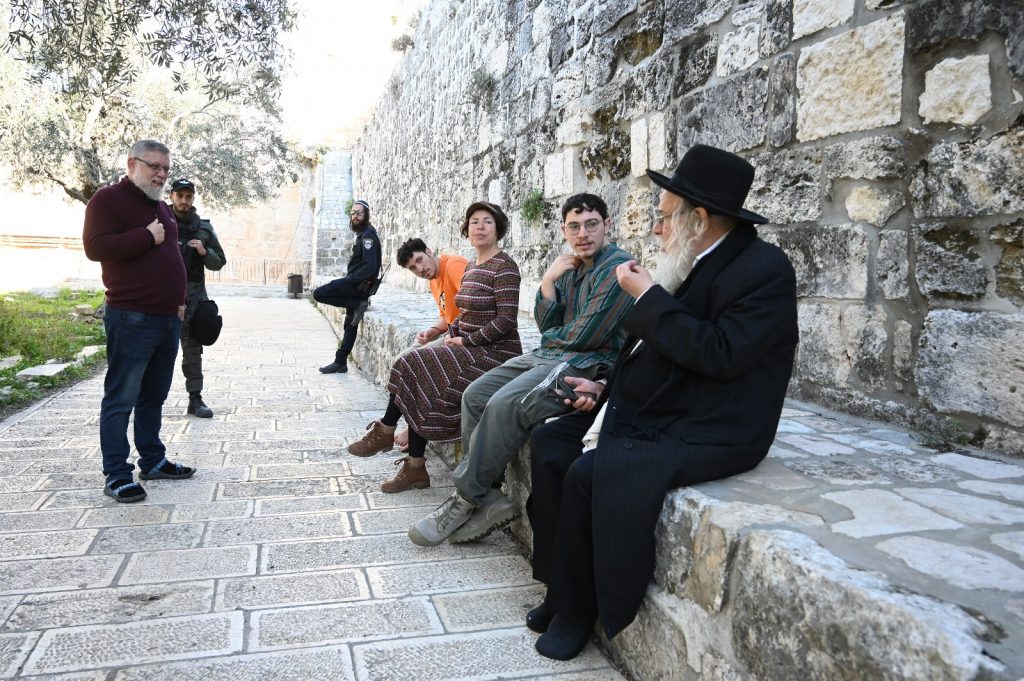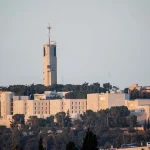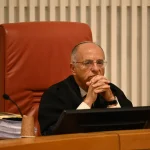Jerusalem, 25 May, 2025 (TPS-IL) — After more than a decade of guiding Jewish visitors around the Temple Mount, Meir and Anya Antopolsky have noticed subtle changes to the Jerusalem holy site over the years. Anya has been documenting those changes in a diary that till now has never been published. The Press Service of Israel is publishing for the first time excerpts from her diary ahead of Jerusalem Day.
The Temple Mount, where the First and Second Jewish Temples were built, is the holiest site in Judaism. The status quo governing the holy site goes back to 1967 when Israel liberated the Old City of Jerusalem from Jordan during the Six-Day War. Fearing a religious war, then-defense minister Moshe Dayan agreed to let the Islamic Waqf, a Muslim trusteeship, continue managing the holy site’s day-to-day affairs, while Israel would maintain overall sovereignty and be responsible for security. The Waqf is overseen by the Jordanian monarchy.
According to the status quo, while non-Muslims are allowed to visit the Temple Mount, they are not allowed to pray there.
Rabbis are divided over Jews ascending to the Temple Mount. For centuries, the widespread rabbinic consensus was that laws of ritual purity still apply to the site, restricting Jews from visiting. But in recent years, a growing number of rabbis have argued that ritual purity laws don’t apply to all sections of the holy site and encourage visits to permitted areas to maintain Jewish connections to the Mount Temple Mount.
Jerusalem Day marks the anniversary of the city’s reunification during the Six-Day War.
March 2015: We notice the logs that have been lying near the Gate of Mercy (the Golden Gate) for several years. They supported the roof of the Al-Aqsa Mosque, but were replaced during renovations. According to radiocarbon analysis, these cedar and cypress logs are at least 2,000 years old, so before the mosque, they apparently were used in the Temple or in one of the surrounding buildings. Several logs were purchased from a wood merchant who had bought them from the Waqf, the rest continue to lie here – exposed to sun and rain…
October 2015: A new order has been issued for the Mount: Officials will remove those Arab women [members of the Mourabitoun] who were screaming, yelling and preventing us from passing. Only twice during our entire circuit were we met with shouts of “Allah Akbar.” We hope that the situation on the Temple Mount will gradually improve.
December 2015: We pass by the huge entrance to the underground mosque. To build it, in November 1999, for several days excavators barbarically destroyed precious archaeological layers, after which dozens of trucks took this soil to a landfill. Today, a special scientific project has been created to study this soil.
After walking a few more meters along the eastern wall, we stop for a traditional short lesson. The police record our every word.
December 2016: The times when police only allowed Jews onto the Mount in small groups of no more than 10 people are long gone. So many people have been coming to the Mount lately that the police have no choice: They let everyone in! On the Mount itself, though, the police constantly hurry our group, allowing only very brief stops. I closed my eyes to concentrate and try to exclude extraneous thoughts in this holy place, when a policeman immediately rushed over and demanded that I stop praying.
“You can stand with your eyes closed, but you can’t move your lips or sway,” he said.
Meir Antopolsky (far left) guiding a group of Jewish visitors to Jerusalem’s Temple Mount on March 11, 2025 as Israeli Police officers look on. Photo by Yoav Dudkevitch/TPS-IL
April 2017: In each group ascending the Mount, you can always see several people from the Jewish Orthodox community. First there were none at all, and then they were perceived as an exception, but today it is already common. It seems that ascensions have ceased to be perceived by Israeli society as something out of the ordinary, and the hysteria in the media about this has stopped.
July 2017: There are more policemen than usual. This time, some of them stood facing the closed gates of the mosque with the silver dome (usually the doors there were always open) – with automatic weapons at the ready…
They didn’t really allow us to stop, and we walked at a fairly brisk pace along the southern wall of the Temple Mount. We turned toward the eastern wall, and, as usual, stopped opposite the Holy of Holies of the Temple. At this moment, one Jew announced that in memory of the three Jews who were killed on Shabbat he wanted to recite Kaddish (a mourning prayer). And he began to read aloud. The police quickly ran up and physically covered his mouth. He only managed to read the first few words, and all of us standing around automatically answered “Amen.”
September 2017: “But in your soul, of course, you can pray!” – Thus the policeman admonished us at the entrance to the Temple Mount during his usual briefing. We have already become accustomed to the police reading us instructions at the beginning of the ascent about what cannot be done on the Temple Mount: pray aloud, read psalms, lie on the ground, raise the Israeli flag… But today suddenly, for some reason, he felt the need to add that praying silently is allowed… It is strictly forbidden to bring any religious books (except Muslim ones) onto the Temple Mount.
And the police carefully ensure that this ban is not violated; all religious literature is confiscated at the entrance. They even pulled a small piece of paper with the text of a travel prayer out of a woman’s purse in our group. But now everything is on phones, and the police, of course, understand this perfectly, so they just turn a blind eye to it. That’s the game.
March 2020: Two days before the complete closure of the Temple Mount due to coronavirus. Al-Aqsa is closed, the Dome of the Rock building is closed. And the entire Old City is empty: No one at the Western Wall, the squares are absolutely empty. The place is free. Who will come here? Let’s hope, the Glory of the Almighty.
May 2021: We ascended the Temple Mount – for the first time after it was reopened for non-Muslim entry. (I remind you that the Temple Mount was closed for 20 days, from May 3 to 23 – Ramadan, Arab riots on the Temple Mount, rockets from Gaza…) On this day, the police are courteous and attentive. There were 20 people in the group, and a full prayer took place. I found no traces of the past Arab riots on the Temple Mount, everything is cleaned up. Only the skeleton of a burned tree reminds of what happened there on Jerusalem Day…
The Dome of the Rock on Jerusalem’s Temple Mount on March 11, 2025. Photo by Yoav Dudkevitch/TPS-IL
September 2021: At one point, an elderly Arab was passing by our group, he was walking very slowly and with difficulty, it was obvious that he had health problems. But he walked, and walked – up to the Golden Dome. He addressed my husband in Arabic, asked where he was from. Having received an answer, he reported that he himself had come here from Sakhnin. Such a friendly conversation took place. Will the time ever come when all of us, together, can peacefully coexist on the Temple Mount? I hope so.
December 2021: What “triggers” the process of Divine response to our prayers? Is the place from which we raise them important? This question, of course, often arises for me on the Temple Mount. Why is it important for me to go there? Won’t God hear me anywhere I am? I was once asked a question on Facebook: why is it necessary to go up to the Temple Mount? I don’t know why it’s necessary, but I know for whom it’s necessary – for me and for the Almighty.
October 2023: It feels like there’s not a single person left in our country who doesn’t have someone among their acquaintances or acquaintances of acquaintances who hasn’t been killed or gone missing. Today on the Temple Mount: prayer for the people of Israel, for the liberation of prisoners, for our victory. And we also read Avinu Malkeinu – a prayer that is usually read only on Rosh Hashanah, Yom Kippur, in the 10 days between them, and on fast days. The line “do this for the sake of those who died for Your holy Name” was read with tears in our voices…
November 2023: On November 7, we ascended the Temple Mount – a month after Hamas breached our country’s border and carried out a terrible massacre of Jews. We walked on the Temple Mount, approaching the invisible boundary that in the time of the Temple could only be crossed in a state of ritual purity and only by Jews. We approached this invisible boundary but did not cross it.
It seems to me that we as a people, and indeed the whole world in general, now stand before the main question: where to set boundaries? We want universal love and brotherhood, and at the same time do not want to lose our individuality. We are attracted to the boundless flow of mercy, but we feel the need to limit it with judgment. We destroy some boundaries – both in our consciousness and in the real world. Others need to be made even harder and stronger. And some boundaries will remain invisible, but we will not cross them.



